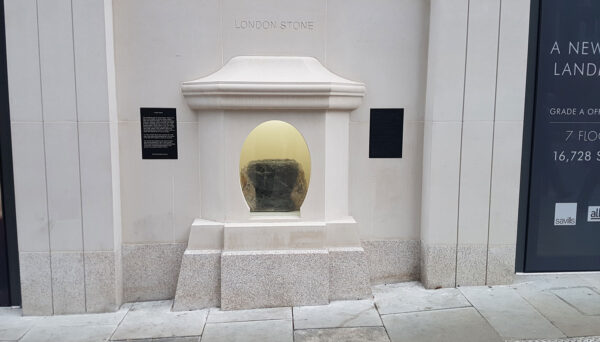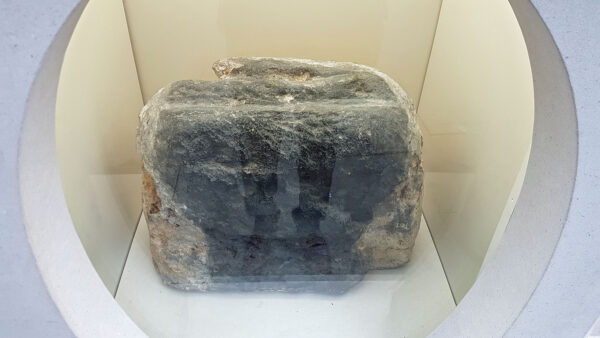The London Stone, ancient relic, protector of London, provider of unlimited rice pudding, mysterious icon, is back in its less ancient home on the streets of London.
The London Stone is a roughly 100 million year old lump of limestone formed when England was mostly submerged under a shallow sea due to the planet being much warmer then than now, and all the ice-caps having melted. Eventually, that primordial piece of Jurassic limestone ended up in London, and went on to become a legend.
When it arrived is a mystery, but it was a landmark for London by the 11th century. Sitting in the middle of the busy road it was probably rather larger at one time, but carts and horses have taken the toll on the Stone.
If any protective legends were attached to the Stone at the time, they’ve long been lost — all the stories we tell about it are inventions.
Yet the myths persist, and that’s what makes the Stone so remarkable and such a famous lump of, well, otherwise quite ordinary stone. We’ve wrapped it up in legend and fantasy feeding a need for some foundation legend to the city and a feeling that we are part of a greater story. We protect the Stone and look after it, even though it’s just a stone.
Put the stone in a quarry and no one will care about it, to be destined to be carved up into office cladding or kitchen worktops, but here in London, the stone is venerated, adored, and a landmark.
After a few decades stuck behind an unimpressive iron grill, it’s back again on Cannon Street in a new housing, with protective glass to show off the stone for all to see.
A new sign on the wall tells a small fragment of its history.
And on we go, protecting a lump of stone because it pleases us to see it as somehow more than just the crushed remains of millions of years old sand grains and calcium.









China Mieville’s novel Kraken, which the MoL article mentions, is a ripping good yarn!
Seem to remember reading reference to an early record of a minor royal’s residence as John of the Stone…..????
It’s surely right that London has a foundation, er, stone to stand alongside other capitals’ creation myths and legends.
It’s all the more aposite that our story is all muddled and that frankly we’re none too bothered about it anyway. Couldn’t be more characteristic of us if it tried.
Any part of the City has lots of stories but this bit especially so. Round the back of the new 111 Cannon St is a tiny ex-churchyard which is also where the Salters’ old hall was, before moving to Fore St.